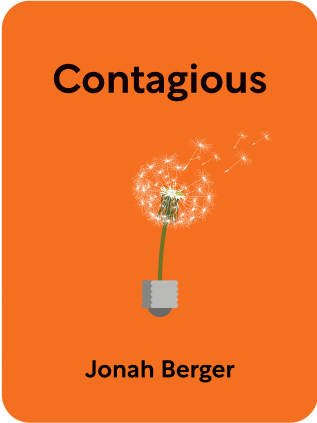

This article is an excerpt from the Shortform book guide to "Contagious" by Jonah Berger. Shortform has the world's best summaries and analyses of books you should be reading.
Like this article? Sign up for a free trial here .
What is behavioral residue? How can implementing this marketing method ensure your product remains visible in the long term?
Behavioral residue is a marketing tactic used to ensure a product remains visible to potential customers for a long time. Visibility is important as people are not going to talk or think about your product if they don’t know about it. Adding behavioral residue will ensure your product visibility continues in the long term and doesn’t fade away, ultimately ensuring increased sales.
Keep reading to learn more about behavioral residue.
Behavioral Residue, Explained
Before we look at behavioral residue, we must first understand the importance of visibility in marketing. Successful products or ideas must be publicly visible. People aren’t going to talk or even think about your product or idea if they never come across it in the first place. However, if people encounter your product or idea a lot, they’re likely to start thinking about it a lot, too.
There are two ways to increase the visibility of a product or idea. These are making the private public and making your product advertise itself. In this article we’ll explore these two methods, then we’ll look at behavioral residue.
Making the Private Public
Making the private public means finding a way to make it publicly clear that people use your product or support your idea, even when this information would usually be private.
Some purchasing decisions are naturally publicly observable. For example, it’s clear which cars people buy because they drive these vehicles around in public. However, other choices are more private. For instance, it’s not usually publicly obvious which makeup products people buy because they apply makeup in the privacy of their own home. Therefore, makeup brands may struggle to generate the word of mouth that comes from a product’s use being publicly visible.
To get people talking about a product or cause that’s usually kept private, find a way for people to display that they’re buying your product or supporting your idea. One way to do this is to send your customers or supporters a “free gift” that they can use in public. For example, a makeup company could send customers a branded tote bag. When the customer uses the bag in their daily life, it will make their usually private purchasing decision public. It adds the visibility that’s crucial in generating word of mouth about a product.
Making Your Product Advertise Itself
Making your product advertise itself means visibly including your branding on your product so that people can immediately see who’s made it. For example, make your logo or tagline visible on the product. That way, when people see others using your product, they’ll learn about the existence of your brand. Examples of famous brands that do this include Nike, Lacoste, and Apple.
If people start to see your branded products a lot, this may become a talking point. For instance, people might start to comment on the fact that the brand seems popular, or ask their friends if they’ve heard of this newly visible brand. This generates word of mouth.
Add Behavioral Residue
No matter which of these two tactics you choose to employ, there’s an extra requirement you need to factor in. Make sure that your product or idea remains visible for a long time—for long after a customer has bought the product or decided to support the idea.
The process of making visibility long-lasting is often referred to as adding behavioral residue. Adding behavioral residue is important because if your product or idea’s visibility is fleeting, people will quickly forget it exists. Word of mouth about it will swiftly die down.
If you try to make the private public, you can add behavioral residue by making sure that the thing that publicizes your product or idea is durable—that people will keep using it again and again. For the makeup company that gives customers branded tote bags, those bags need to be high-quality enough to be used for months or years. Only then will the brand remain visible for a long time.
If you try to make products advertise themselves, ensure that these products are of good-enough quality that people keep using them. The product won’t advertise itself and generate visibility if it’s thrown to the back of a cupboard and never used.
If you’re trying to promote a cause, you might find generating behavioral residue particularly difficult. Causes are often promoted through short-term fundraising drives: for example, a one-off event or a limited-time ad campaign. At the time, your event or campaign will generate a lot of interest and make your cause very visible. But, as soon as it’s over, that visibility is going to start to fade away. Eventually, people will forget the event or campaign ever happened—and they’ll forget your cause, too.
You can remedy this by giving the people who participate in your fundraising drives a long-lasting token of participation: a memento that reminds them of what they did. Make this memento something that will easily get public visibility—for example, a plastic wristband with your charity or cause’s name on it. A wristband is something durable that people can wear for months or years to come. When others see the person wearing the wristband, they’ll be reminded of your cause’s existence. Therefore, the cause will remain visible in the long term.

———End of Preview———
Like what you just read? Read the rest of the world's best book summary and analysis of Jonah Berger's "Contagious" at Shortform .
Here's what you'll find in our full Contagious summary :
- Why some new products and ideas gain widespread popularity while others fail
- The six principles to making your product or idea contagious
- The importance of word of mouth in marketing






